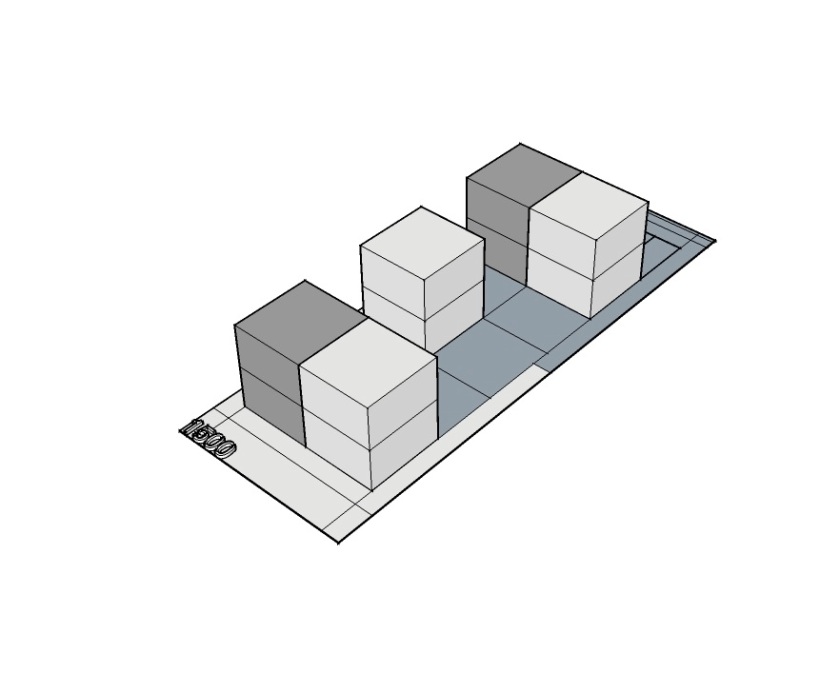San Diego’s Missing Middle
The Bay Area’s housing disaster tells San Diegans that our housing crisis will only get worse and doing nothing is not an option. We have to decide whether we want more neighbors or to pay more taxes as we desperately need money to fix our city’s crumbling infrastructure. The conundrum is that we despise taxes and the mere mention of ‘density’ polarizes any discussion into either demands for no new growth or building tall towers. Fortunately, we have a housing model that fills the ‘missing middle’ that more responsibly grows our city.
San Diego’s beach areas are home to our most vehemently defended neighborhoods. It’s healthy, outdoor-oriented lifestyle, when coupled with parking constraints, begs people to walk and ride bikes year ‘round. Our beach density model is essentially a residence or shop with three (3) to five (5) units on each lot that are no more than two (2) to three (3) stories tall. All of these homes and businesses are mixed together every few blocks or so. While housing prices are very high in the beach areas, this is mostly due to its finite land availability and layers of regulatory constraints, but those are lessons to be learned. Our beach density’s real value to the rest of San Diego is found in its mixed-use walkable urbanism pattern/model that creates more housing and economic development opportunities.

South Mission Beach’s Gentle Density (Image Creative Commons)
The best places to test this middle ground housing model would be any neighborhood in and around our existing Urbanized Areas. Such as, Southeast San Diego, Golden Hill, South Park and along our major corridors, such as El Cajon Boulevard, University Avenue, and Bay Park, City Heights, and the cities of La Mesa, Lemon Grove, and National City. Hurtles to allowing for this gentle uptick in housing would primarily be our citizen’s natural ‘fear-of-change’ reflex, which is why using a local model makes sense (as opposed to an imported Portland or Vancouver model). This is somewhat due to our quality of life being ‘precariously’ high, as our home values are a major part of our personal wealth. Therefore, we are very leery of any change that may affect any of that value.
Another issue will be found in unbundling the many layers of inconsistent development rules and regulations. Today’s zoning rules are based on a 1960’s suburbia building model while Pacific, Mission, and Ocean Beach areas were built in the pre-zoning traditional neighborhood era. In addition, outdated traffic calculations are still in use to measure and mitigate for new housing wrongfully giving us suburban infrastructure facilities and financing estimates. Finally, we would need SANDAG to allocate meaningful funding of pedestrian and bicycle facilities to improve our sidewalks, street trees, lighting, bike lanes, cycle tracks, and transit stops.
The benefits of urbanizing ‘elegantly’ are more urban housing choices with healthier lifestyles that lead to less demand for new suburban housing in the back country, and a spreading-of-the-wealth as local land owners will build most of these units, as opposed to international developers, ensuring that rents are recirculated within our economy. With average lot sizes in traditional San Diego neighborhoods ranging from 5,000 to 6,800 square feet, five (5) units on these lots on a typical lot would support regional transit service, neighborhood scale shops, restaurants, and professional office. And, assurances in maintaining the beloved character of mixed-use walkable places will be found in making any deviations from more precise zoning rules impossible.
Our city is in desperate need for ‘attainable’ housing and our beach density model provides the most fitting solution. By allowing every lot in San Diego’s urbanized areas to have up to five (5) units’ by-right, we have the opportunity to solve for our critical housing and infrastructure financing deficiencies without dramatically altering our city’s character. Ultimately, we can all enjoy and benefit from our healthy, outdoor lifestyle the beach model provides us.



Wide Variety of Design in a Narrow Range to Respect Neighbors Privacy (Images by David Saborio)
UPDATE (12.28.2015): How to Allow for Beach Densities:
- Eliminate off-street parking minimums (Transit/Bike/Walk);
- Eliminate minimum lots sizes and minimum lot dimensions;
- Up-zone any parcel that allows a single family house to 2-5 units;
- Covert per unit development impact fees to per SF impact fees and eliminate development impact fees in the places where you want development;
- Take Main Street back from the State DOT. (increased revenues from getting on-street parking back and taming the overly wide arterial will more than cover the increased maintenance costs);
- Amend your adopted fire code (zero lot line for sideyard setbacks);
- Adopt City of San Diego endorsed NACTO Street standards;
- Allow for self-certification by Licensed Architects. Building permit issued by the Architect with required notification of the municipality to keep the assessor’s records current.



Great look at a local fix. You da man, Howard!
Impeccable argument from the perspective of planners/developers who view residents objectively, as the basic units in a mathematical packing problem. But fundamentally flawed from the experiential perspective of a beach community, which tolerates greater density precisely because it is offset by the infinite perspectives and zero density of the nearby ocean. No analogical spatial element exists for the urban neighborhoods named in the article, and for this reason its argument is broken.
I would put Balboa Park, San Diego River Park, and other regional amenities and edges in the same category as the beach amenity. Thanks for reading.
If you think San Diego’s beach neighborhoods are Mumbai-in-the-making without the visual relief of an ocean, you really shouldn’t be living in a large city.
(Lived in San Diego for almost 20 years prior to moving to Seattle in 2011.)